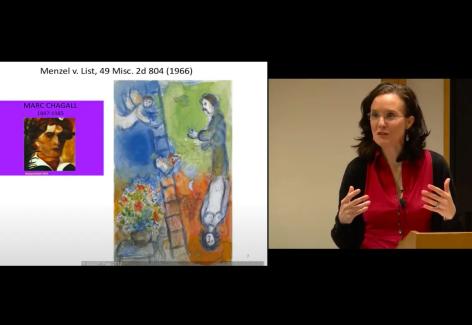This exhibition presents recent research into the World War II-era provenance of the Trees collection at Krannert Art Museum to examine the history of ownership through six of the museum's longest-held paintings.
Sponsored in part by Francis P. Rohlen Visiting Artists Fund/Art + Design Visitors Series, the Program in Jewish Culture and Society, and Krannert Art Museum
Exploring themes such as genealogy, documentation, attribution, and the perplexing problem of identifying unfamiliar collectors’ marks, Provenance: A Forensic History of Art displaces the prevalent conception of forensic inquiry as a tool for crime scene investigation and relocates it from the laboratory to the art collection. Etymologically, forensics relate to courts of law: a “forensic” investigation denotes the methodical examination and compilation of evidence for a court or other public forum. Likewise, provenance research is a forensic method employed to reconstruct legal chains of ownership that establish an artwork’s whereabouts from the moment of creation to its present circumstances.
Once customary, this now unsung approach to art history yields rich and nuanced information about the lives of objects—information whose value lies not only in its legal significance, but also its ability to reveal the very personal journeys of artworks through the lives of collectors.
Works included in the exhibition are 15th–19th century paintings by Moretta da Brescia (attributed), Ambrosius Holbein (attributed), Master of the St. Ursula Legend, Bartolomé Esteban Murillo, Theodule Ribot, and George Romney (after).
Curated by Nancy Karrels, doctoral candidate in Art History
Exhibition based on research supervised by Maureen Warren, curator of European and American Art





